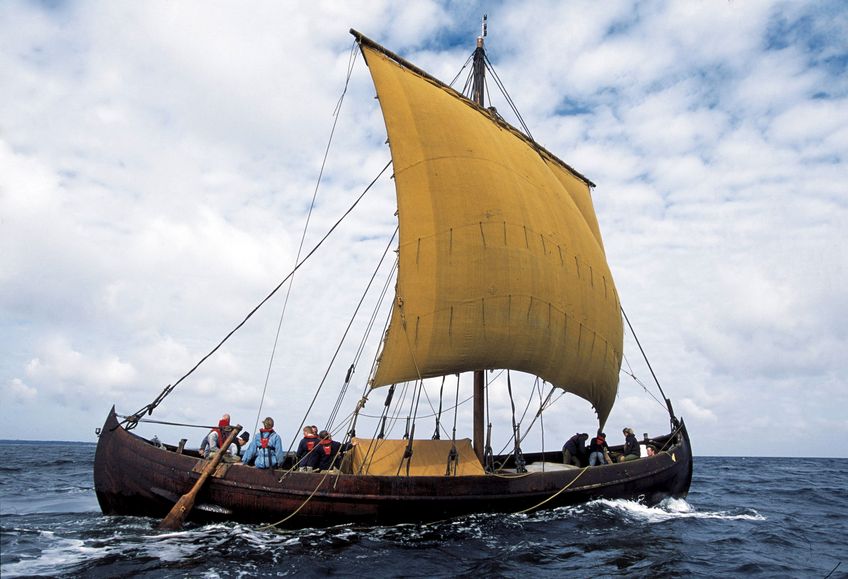The sail
The Viking ship's sail made it possible to travel long distances over the open sea. Weaving the sails and adjusting it to the specofic ship was a lot of work. The Vikings used different materials for their sails. The two most important were flax and wool - both has its advantages and disadvantages:
Flax, which is a plant fiber, provides a light and strong sail. But it is a big job to work the flax fibers and make them ready for weaving, and in addition it rots easily.
A woolen sail is heavy but it's also more elastic and does not rot, but is harder to treat and seal.
The reconstruction of Viking Age and Early Medieval ship’s sails has proved a particular challenge for the Viking Ship Museum, as there are but few traces preserved in the archaeological record. It is therefore necessary to draw on information from comparable finds and ethnological evidence. Below is a summary of the general questions concerning the reconstruction of sail and rigging:
The Viking ships’ square sail was, in size and shape, developed together with the individual hull size and type of ship. The central crucial factor is the elementary balance between hull, sail and rudder when sailing against the wind, i.e. sailing close-hauled.
If the sail is too broad relative to the hull and the shape of the hull, the ship seeks away from the wind – it has lee helm, and cannot tack against the wind. If the sail is too narrow, the ship turns into the wind without the rudder being able to prevent this – it has weather helm. If this is not corrected, the ship is dangerous to sail – in fact it is useless as a sailing vessel.
If the sail is too low, the ship will sail too slowly and it will first sail properly when the wind is very strong. If the sail, and with it the mast, is too high, the load is too great and it is necessary to reef the sail too early.
Further to all this, it is vital that the individual types of ship are ballasted and loaded correctly. In the successors to the Viking ships, the North European square-rigged boats, identical conditions can be traced. Here, there were regulations for the dimensions of the mast, sail and rudder for the individual boat types. There are a number of finds of rigging details, for example blocks, shroud pins, mast fragments, yard etc. from the Viking period and the Middle Ages. They show little variation in principle and execution throughout this time, and also relative to the last Nordic square-rigged boats from the early 20th century.
In combination with oral tradition, it is therefore possible to produce rigging for the individual ship finds within very narrow constrains.
